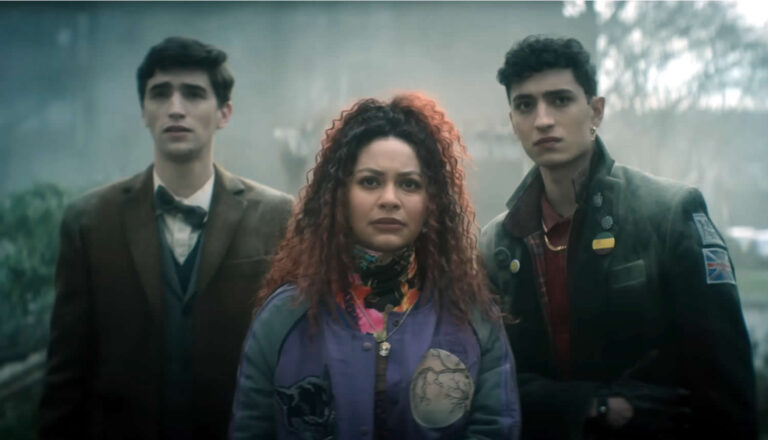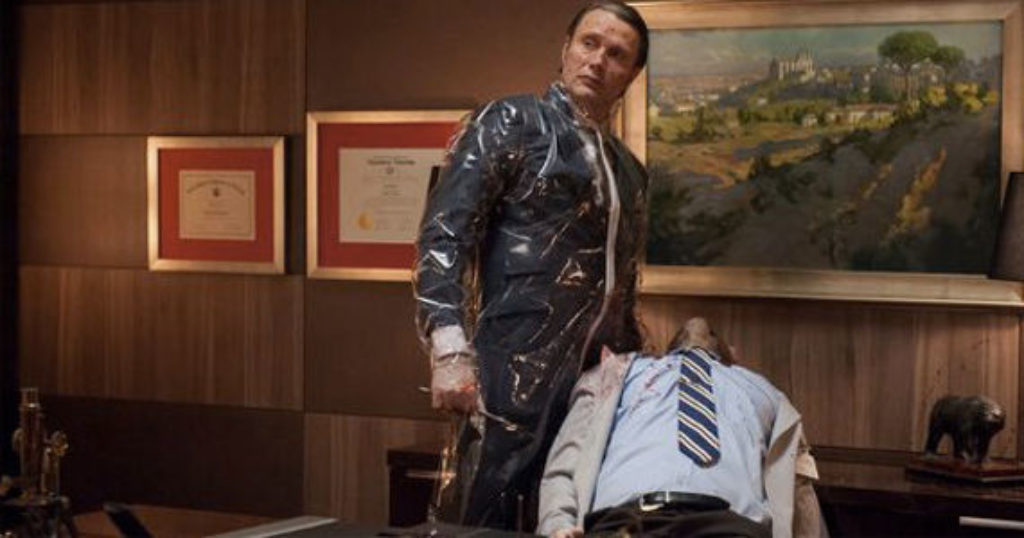
Dead Boy Detectives
Dead Boy Detectives targets teens in style and story. But it comes with very adult, problematic content.

Will Graham is a sensitive guy. It’s what made him such a help to the FBI—his ability to empathize with almost anyone. He understands people because he can, in some little-understood way, become them. He can peer through their eyes and see not only what they see, but how. The sick, monstrous deeds of a murderer grow, if not sane, at least sensical. And through this dint of understanding, he helped his FBI cohorts—Agent Jack Crawford chief among them—catch the bad guys.
Of course, this sort of super-empathy has some obvious downsides. It’s not comfortable to wade into the mind of a killer. Will’s gift also makes him antisocial. He has horrible dreams. And for the moment, he’s in prison for the killing, mutilation and cannibalization of several young women—the result, his accusers say, of his curious empathy.
Graham is unjustly accused, but the evidence against him is nonetheless overwhelming. And perhaps the only man who can help Graham prove his innocence is the same man who Graham accused of these horrific crimes: The brilliant, cultured Dr. Hannibal Lecter.
Perhaps you’ve heard of him.
NBC’s Hannibal takes place well before Lecter was unmasked as a terrifying psychopath—before he supped on a census-taker’s liver with “some fava beans and a nice Chianti.” The series, while featuring some characters from Thomas Harris’ series of Hannibal Lecter books, is not based on any one novel. This is a Lecter unfettered by bars or creepy facemasks. In this NBC show, the psychiatrist is literally free to work his quasi-necromancy on the living and dead alike.
In 1991, Lecter became a true household name in the guise of Anthony Hopkins in the Oscar-winning fright-fest The Silence of the Lambs. It was, at the time, one of the most disturbing stories ever put on celluloid—a horrific amalgamation of sickness and sex and gore—and was, of course, rated a well-deserved R. Now, 22 years later, much the same sort of content has been deemed appropriate for unrestricted broadcast-television audiences.
Hannibal doesn’t feature masks made of human skin. Yet. But blood and gore flows in abundance—from the victims’ gaping red wounds to their organs sautéed in wine sauce. This show is predicated on death and psychosis. So while levels of gore may vary from episode to episode, the oppressive sense of horror will permeate its every second. Graham’s dreams and waking visions can be disturbing, even terrifying. Sex and violence mingle uncomfortably, too.
Hannibal is, in my experience, the most grotesque, most horrific show on broadcast television, and arguably on cable, too. It’s perhaps not The Walking Dead violent—at least not yet. But most of the worst scenes in Dead involve, well, the dead. Here, victims are very much alive before being creatively and horrifically butchered.
“Ultra-violent TV and serial killers are having a very popular moment,” writes salon.com’s Willa Paskin. And, of course, she’s right. Practically everywhere your television dial turns right now, you’re bound to find buckets of blood and oodles of intestines littering the set, often the product of charismatic psychopaths.
I used to think of television as comfort food—something reliably entertaining that most of us might watch an hour or two of after a hard day’s work. Now it seems we’re gorging on discomfort—stuffing ourselves with content unimaginable just a decade ago.
Dr. Lecter, given his particular culinary preferences, would be gratified.
“Hassun”
Another killer is committing crimes in apparent homage to the grisly deeds Graham is charged with. An ear is sent to Graham, and the accompanying body is found later—burned, mutilated and impaled on antlers. When the judge will not admit the latest crime as evidence in Graham’s defense, he too is killed, his body strung up with chains in his courtroom. A set of scales holds his brain and heart.
None of this is left to the imagination. We see the judge without the top of his skull. The ear falls out of an envelope. (The severed ear makes several other appearances, too, sometimes in extreme close-up.) Using his power of empathy, Graham imagines himself at the first crime, where he acts out the grisly mutilation and death. Viewers see grotesque photos of previous victims as well, and hear horrific court testimony of how they died, were mutilated and eaten. Graham also has visions of him being executed via electric chair and gas chamber.
Elsewhere, Lecter sips brandy with Crawford. Lecter, on the stand, swears on a Bible, and he tells Crawford he feels like St. Peter, turning away Graham from the gates of heaven three times. Someone testifies that Graham worked with the FBI because saving a life was just as “arousing” as ending one, and that he wanted to play God.
“Aparitif”
A killer is abducting college-age girls, impaling them on deer antlers and removing their livers—apparently to eat them.
This killer, Will determines, “loves” the women, and he doesn’t rape them. But he does hang them on deer antlers. (We see a dreamlike image of one girl suffering this fate in a nightgown.) “He kills them quickly, and to his thinking, with mercy,” Will says. So the agent knows that when he finds a nude corpse of a woman impaled in the middle of a field (antlers obscure breasts; legs hide genitals), he’s dealing with a copycat.
The copycat, it’s suggested, is Hannibal himself. The girl’s lungs were removed, we’re told, before she died, and Hannibal appears to carve up and tenderize a set of human lungs for his dinner. The next morning, Hannibal brings Will some homemade sausage and eggs. (Will says it’s very tasty.)
We see several dead and dying people, most saturated in blood and suffering from terrible injuries. Blood spatters walls and pools on floors. Will and others describe, in detail, what killers did—at one point itemizing the final fate of a bleeding, paralyzed woman. Someone’s shot multiple times and left to die. We see grotesque pictures of victims and bloodstained clothes.
Characters drink wine. We hear a reference to semen.


Paul Asay has been part of the Plugged In staff since 2007, watching and reviewing roughly 15 quintillion movies and television shows. He’s written for a number of other publications, too, including Time, The Washington Post and Christianity Today. The author of several books, Paul loves to find spirituality in unexpected places, including popular entertainment, and he loves all things superhero. His vices include James Bond films, Mountain Dew and terrible B-grade movies. He’s married, has two children and a neurotic dog, runs marathons on occasion and hopes to someday own his own tuxedo. Feel free to follow him on Twitter @AsayPaul.

Dead Boy Detectives targets teens in style and story. But it comes with very adult, problematic content.

An elf mage contemplates on connection and regret as she watches her human friends grow old and pass away.